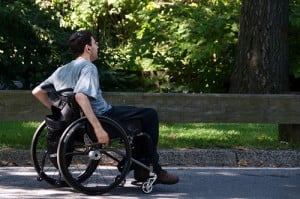
U.S. Department of Transportation Initiatives
The U.S. Department of Transportation is committed to providing individuals with disabilities equal access to methods of transportation. Through ongoing accessibility initiatives, such as engaging with new vehicle technologies, increasing mobility services and ensuring the affordability of these services, the DOT continues to push for innovation and technology to make the transportation system more inclusive.
The DOT’s overall accessibility initiatives include various programs that exist to provide accessibility in the broadest areas of transportation. These include the following:
- Complete Trip— promotes the ability for any person to get from Point A to Point B seamlessly.
- Inclusive Design Challenge— awards cash prizes to people who design solutions that help people with disabilities get access to critical destinations with automated vehicles.
- Mobility for All Pilot Program—makes grants available to projects that are meant to improve access to public transportation.
For more information on these initiatives, please visit the DOT’s Accessibility Page.
Continue reading to learn about the specialized organizations within the DOT that are carrying out additional accessibility initiatives.
ATTRI (Accessible Transportation Technologies Research Initiative)
The goal of the ATTRI initiative is to develop and implement applications to improve mobility for all people. They also focus on removing barriers to transportation for those with disabilities.
Some of the ATTRI’s most notable initiatives include the following:
- Technologies for wayfinding and navigation. This technology is often implemented in infrastructure, however in some cases it can be available to users on a smartphone application. Wayfinding and navigating technologies help users by providing path planning and situational awareness about indoor and outdoor environments such as train stations or bus stops. Refer to the DOT’s Wayfinding page for more information.
- Pre-trip concierge and visualization: Prior to taking a trip, the user or caregiver is able to review a virtual visualization of the path in order to familiarize themselves with the trip. Refer to the DOT’s Concierge page for more information.
- Safe intersection crossing enables users to use their connected mobile devices to interface with vehicles, traffic signals, and more to help them cross intersections safely. Refer to the DOT’s Safe Crossing page for more information.
CCAM (Coordinating Council on Access and Mobility)
CCAM’s mission is to issue policies that implement activities to improve the availability and accessibility of transportation for targeted populations, including people with disabilities. CCAM focuses on how lack of transportation access effects access to jobs, medical care, food, and other needs. CCAM continues to work with many other government agencies to host webinars and discussions about how to make transportation more accessible to people with disabilities.
National Aging and Disability Transportation Center
The NADTC works to promote the availability of transportation access for older adults and people with disabilities. The Creating Access to Nutrition Plan, or CAN Plan, is a program created by the NADTC to connect seniors and people with disabilities in Tulsa, Oklahoma to nearby grocery options. This initiative spread awareness to Tulsa residents on which of the five closest grocery stores can be reached using public transportation, and even utilizes a ride-sharing service with Uber, as it continues to explore creative ways to help seniors and the disabled have equal access to food and nutrition in their community.
National Rural Transit Assistance Program
The mission of the NRTAP, a program of the Federal Transit Administration, is to address training and technical assistance needs of rural transit operators in the United States. Online training and resources are provided for rural transit drivers, rural transit agencies and rural transit managers to equip them with the tools they need to assist riders and improve rural transportation. To review the educational training material available, please reference the NRTAP’s Training Overview page.
